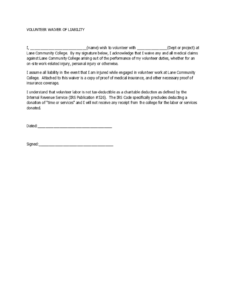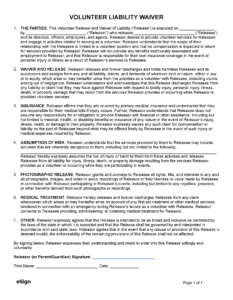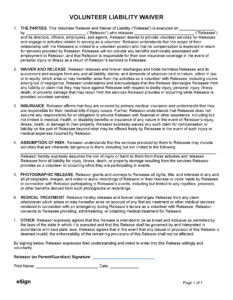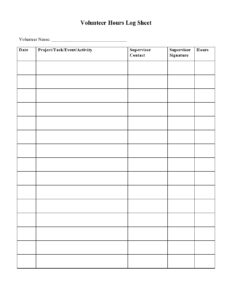Utilizing such a document offers significant protection for non-profit groups, charities, and other entities reliant on volunteers. It minimizes the potential for costly litigation and helps maintain financial stability. Furthermore, the process of reviewing and signing such an agreement fosters transparency and ensures volunteers understand the potential hazards involved in their service.
This article will further explore the key components of these vital documents, common misconceptions surrounding their use, and best practices for implementation within various organizational settings.
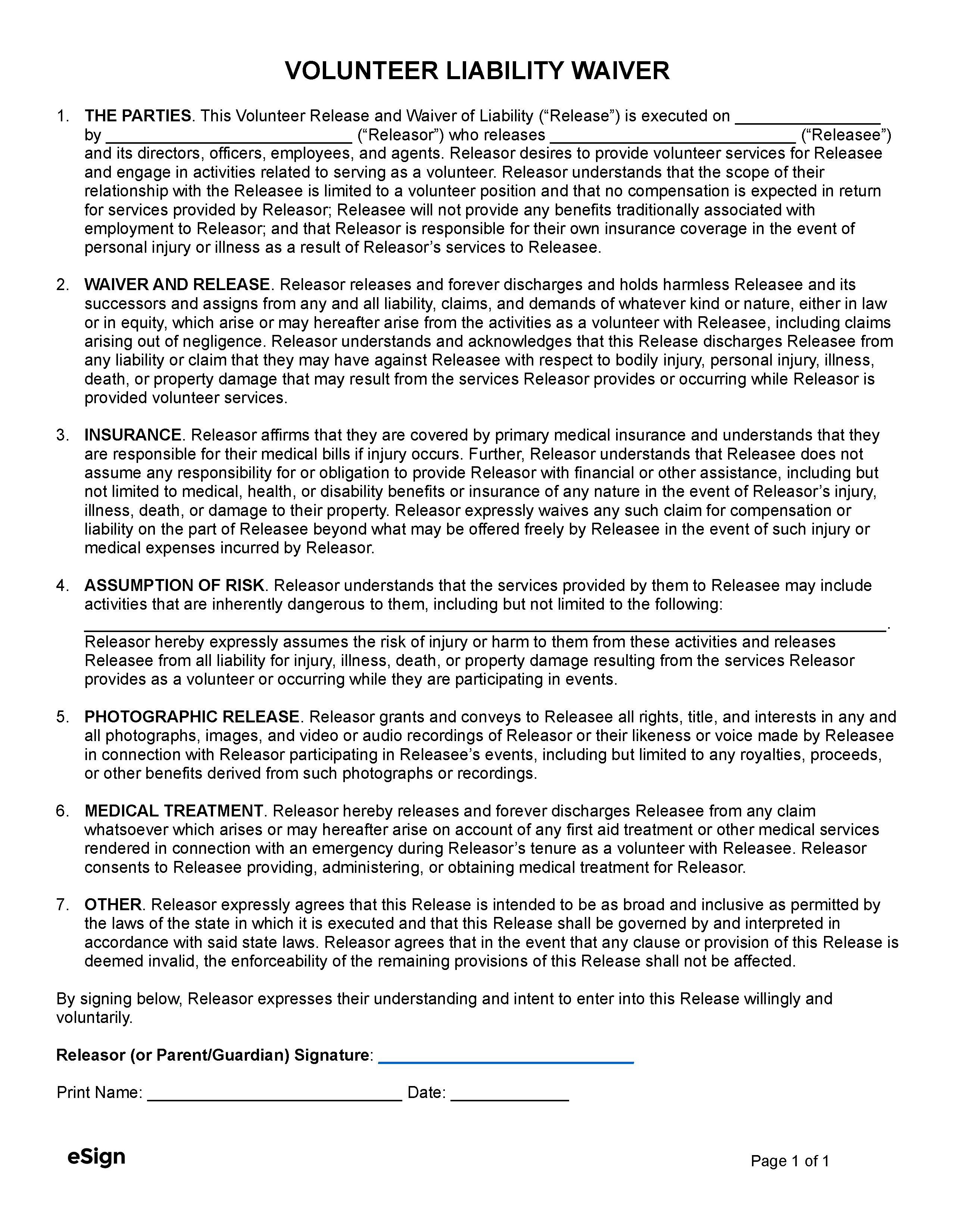
Key Components of a Volunteer Waiver
Effective waivers contain specific elements crucial for ensuring comprehensive legal protection and clarity for all parties.
1: Identification of Organization and Volunteer: Clear identification of the organization requesting the waiver and the volunteer providing the release is essential. Full legal names and addresses should be included.
2: Description of Activity and Associated Risks: The specific volunteer activity, including location and duration, must be clearly outlined. A detailed description of the inherent risks associated with the activity should also be included.
3: Assumption of Risk: This section explicitly states that the volunteer understands and accepts the inherent risks associated with the activity.
4: Release of Liability: This crucial component states that the volunteer releases the organization, its directors, officers, and employees from liability for any injuries or damages sustained during the activity, except in cases of gross negligence or intentional misconduct.
5: Indemnification Clause: This clause protects the organization from financial loss due to claims brought against it by third parties related to the volunteer’s actions.
6: Severability Clause: This ensures that if one part of the waiver is deemed invalid, the remaining sections remain enforceable.
7: Governing Law: The jurisdiction whose laws govern the interpretation and enforcement of the waiver should be clearly stated.
8: Signature and Date: The volunteer’s signature and the date of signing are necessary to validate the agreement.
Careful consideration and inclusion of these components are vital for creating a legally sound and effective document that protects both the organization and its volunteers.
How to Create a Volunteer Liability Waiver
Creating a robust waiver involves careful consideration of several key elements. A well-drafted document safeguards organizations and clarifies expectations for volunteers.
1: Consult Legal Counsel: Seeking legal advice is paramount. An attorney can ensure the waiver complies with applicable local, state, and federal laws. This minimizes potential legal challenges and maximizes enforceability.
2: Clearly Identify Parties: Full legal names and addresses of the organization and the volunteer should be clearly stated. Ambiguity in identification can render the waiver less effective.
3: Detail the Scope of Volunteer Activities: A comprehensive description of the volunteer work, including specific tasks, locations, and timeframes, is essential. This clarity helps define the scope of the waiver’s coverage.
4: Articulate Inherent Risks: Potential hazards associated with the volunteer activities must be clearly articulated. This ensures volunteers are aware of the risks they are assuming.
5: Incorporate an Explicit Release of Liability: Unequivocal language releasing the organization from liability for injuries or damages, except in cases of gross negligence or intentional misconduct, is crucial.
6: Include an Indemnification Clause: This clause protects the organization from financial repercussions arising from third-party claims related to the volunteer’s actions.
7: Ensure Clarity and Readability: Using plain language, avoiding legal jargon, and maintaining a clear structure enhances understanding and reinforces the agreement’s validity.
8: Provide Space for Signatures and Dates: Designated spaces for signatures and dates are necessary for formalizing the agreement and documenting acceptance of the terms.
A meticulously crafted waiver, developed with legal guidance, provides crucial protection for organizations and promotes transparency with volunteers. This proactive approach strengthens risk management and fosters a safer environment for all parties involved.
Careful implementation of comprehensive liability waivers for unpaid personnel is a critical aspect of risk management for organizations reliant on volunteer services. Understanding the key components, legal considerations, and best practices for creation and utilization ensures these documents provide optimal protection. A well-drafted document clarifies expectations, minimizes potential legal disputes, and fosters a secure environment for both organizations and volunteers.
Proactive risk management through the use of legally sound waivers contributes to the sustainability and effectiveness of organizations dedicated to serving their communities. Prioritizing this essential practice allows these entities to focus resources on their core missions while safeguarding their operations and the individuals who contribute their time and effort.
